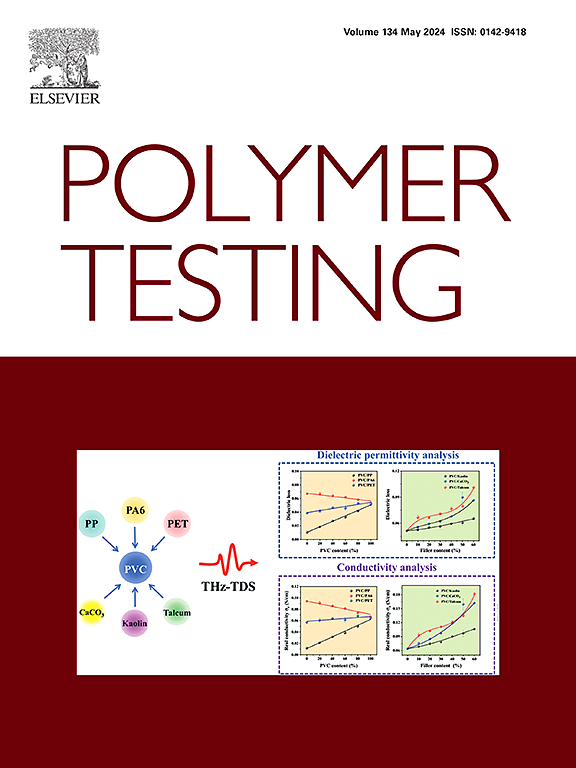Construction of silane-modified polyampholyte hydrogel coatings for multi-scale antibiofouling
IF 5
2区 材料科学
Q1 MATERIALS SCIENCE, CHARACTERIZATION & TESTING
引用次数: 0
Abstract
The antifouling capabilities of zwitterionic hydrogels have been well established, yet, drawbacks such as single antifouling performance and osmotic pressure-driven swelling in water, which lead to poor mechanical properties and low bonding strength, respectively, remain obstacles to practical applications. In this work, silane-modified polyampholyte (S-PA)-based hydrogel coatings with high adhesive strength and multi-scale antifouling ability were prepared by introducing silane onto the hydrogel surfaces. The resulting S-PA hydrogel coatings exhibited as high as 1980 J m−2 adhesion, due to the covalent bonding between the vinyl groups in PA and silanols in silane molecules. Furthermore, the S-PA hydrogel coatings demonstrated good protein adsorption resistance (the protein adsorption capacity of bovine serum protein was 5 mg g−1) and bacteriostatic ability, which endows the coating's multi-scale antifouling effect together with its excellent anti-diatom adhesion property (the adhesion area of navicular on S-PA hydrogel was as low as 7.43 mm2). The high adhesive strength and multi-scale antifouling ability of the S-PA hydrogel coatings presented in this work may provide a new route toward marine antifouling strategies.
硅烷改性聚两性聚合物水凝胶多尺度抗菌涂料的构建
两性离子水凝胶的防污性能已经得到了很好的证实,但其单一防污性能和渗透压驱动的水中膨胀等缺点,分别导致其机械性能差和结合强度低,仍然是实际应用的障碍。本文通过在水凝胶表面引入硅烷,制备了具有高粘接强度和多尺度防污能力的硅烷改性聚两性聚合物(S-PA)基水凝胶涂料。由于PA中的乙烯基和硅烷分子中的硅烷醇之间的共价键,得到的S-PA水凝胶涂层具有高达1980 J m−2的附着力。此外,S-PA水凝胶涂层具有良好的蛋白质吸附能力(牛血清蛋白的蛋白质吸附量为5 mg g - 1)和抑菌能力,具有多尺度防污效果和优异的抗硅藻粘附性能(舟状体在S-PA水凝胶上的粘附面积低至7.43 mm2)。本文所提出的S-PA水凝胶涂料具有高粘接强度和多尺度防污能力,为船舶防污策略提供了一条新的途径。
本文章由计算机程序翻译,如有差异,请以英文原文为准。
求助全文
约1分钟内获得全文
求助全文
来源期刊

Polymer Testing
工程技术-材料科学:表征与测试
CiteScore
10.70
自引率
5.90%
发文量
328
审稿时长
44 days
期刊介绍:
Polymer Testing focuses on the testing, analysis and characterization of polymer materials, including both synthetic and natural or biobased polymers. Novel testing methods and the testing of novel polymeric materials in bulk, solution and dispersion is covered. In addition, we welcome the submission of the testing of polymeric materials for a wide range of applications and industrial products as well as nanoscale characterization.
The scope includes but is not limited to the following main topics:
Novel testing methods and Chemical analysis
• mechanical, thermal, electrical, chemical, imaging, spectroscopy, scattering and rheology
Physical properties and behaviour of novel polymer systems
• nanoscale properties, morphology, transport properties
Degradation and recycling of polymeric materials when combined with novel testing or characterization methods
• degradation, biodegradation, ageing and fire retardancy
Modelling and Simulation work will be only considered when it is linked to new or previously published experimental results.
 求助内容:
求助内容: 应助结果提醒方式:
应助结果提醒方式:


